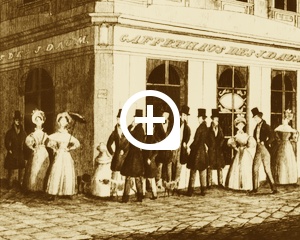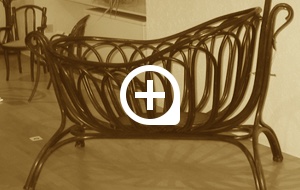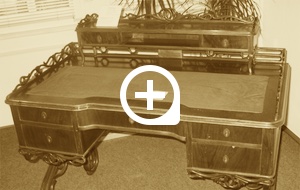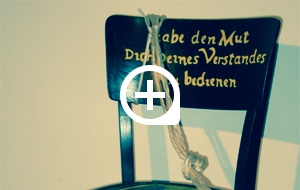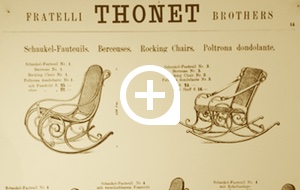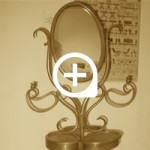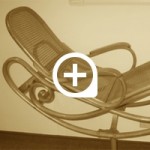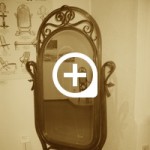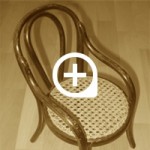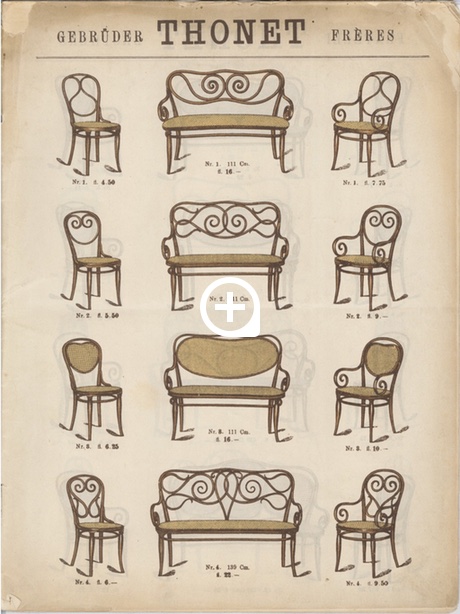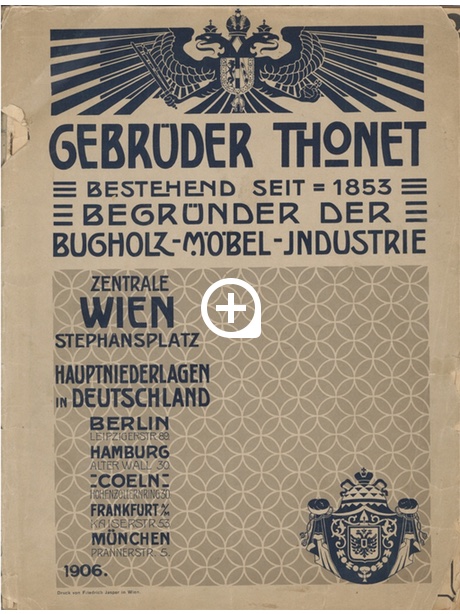Audio
In the 1880s the Thonet factories extended both the range of models offered, as well as the extent of choice within each model series. At the same time production as a whole increased.
In the first known sales catalogue of 1883, a total of 219 models are pictured on 21 pages. The range of classical types was completed with new ensembles, and at the same time the series of special chairs and beds was extended. There was also a whole range of new objects intended for private use, such as children’s cradles, flower stands, beds, washing tables, clothes stands, mirror frames and garden furniture. By 1886 there was a second catalogue, and in 1888 there was a third catalogue for ‘Gebrüder Thonet’. This last one contained 339 different models over30 pages.
The product range included sets for chairs, armchairs, bench seats, tables and rocking chairs as well as stools, children’s furniture to easels, prayer stools, dressing table mirrors, umbrella stands, music stands and newspaper stands, fire screens and screens.
Thonet’s customers included cafés, restaurants, hotels, theatres, authorities and administrative offices, but above all private households.
The Daum coffeehouse, Vienna
Chair No. 4 belongs to the furniture which was produced early in the series. It was supplied to the Queens Hotel in Pest, today Budapest, amongst others. From 1851 onwards Thonet furnished the Viennese Daum coffeehouse near Kohlmarkt. In doing so he extended his customer base from private customers to large businesses. Soon a table and bench seat completed the set.
Audio
The overview of models of the Parisian Thonet representative office in 1866 showed that it exceeded what was on offer as advertised on the first well-known sales poster from 1860 by about three times as much.
As well as the addition of the models No.16 and 17, additional bench seats, armchairs, tables collapsible and folding furniture, swivel chairs and children’s furniture were added to the range.
The Thonet fireplace chair, which could be folded up in the simplest way, was developed by reducing the bentwood technique to a few elements, which displayed extreme stability and incredibly sturdiness, in spite of the possibility of folding them up.
The swivel chair already points to the broad range of later Thonet office furniture.
Children’s furniture was already offered by the company in large quantities from 1860.
The artistic vanity table with mirror showed that Thonet did not only develop chairs from bentwood, but also other pieces of furniture and everyday objects.
The Parisian world exhibition in 1867 was a further great success for the Thonet company. As well as the series models offered, the company showed for the first time an upholstered parlour set and as a special attraction a demonstration chair developed by August Thonet. The jury awarded the Thonet display a gold medal.
Children's furniture
From 1860 Thonet began to produce children’s furniture. Their basic design corresponds to that of bigger models and they are of the same quality as other everyday furniture.
Office furniture
Urbanisation and industrialisation meant that bureaucratisation also grew, which increased the need for office furniture, in particular chairs and desks. The label on the chair showed here makes clear the recognition Thonet received in this field: ‘Used by His Imperial and Royal Apostolic Majesty, Emperor Franz Joseph I.on the occasion of his visit to the factory in Bystřice 1/Host on the 3 September 1897.’
Striking Design
The objects shown here all come from the last third of the 19th century, when Thonet had long been in the process of mass production. They prove that striking design is not necessarily just for luxury goods.
The design of chair No. 51 is attributed to August Thonet, although there is no actual proof for this.With the ingenuity of its construction the chair is different to the rest of the Thonet furniture and is seen as being ahead of its time. A distinguishing feature here is that due to formal construction characteristics, such a high stability is achieved that the leg ring became unnecessary.
People would have sat astride the smoker’s chair. The upholstered armrest supports the arms. Underneath swivel-mounted wooden bowls are fixed, on which wine or beer glasses and ashtrays could be placed.
Fireplace furniture
This rare and valuable group of fireplace furniture pieces belongs to some of the most elegant and comfortable models Thonet produced. They demonstrate in a convincing way how consistently Thonet worked according to the maxim ‘form follows function’.
Thonet in art
Again and again Thonet’s furniture and designs become the inspiration for artists and designers. But also the family themselves were incredibly devoted to the arts. Thus for example very striking designs have been attributed to August Thonet, and he also composed music.
Rocking chairs
As well as the classic coffee house chair, the rocking chair established Thonet’s worldwide reputation. Both became the epitome for innovative bentwood technology. In spite of the large-scale production, these chairs, manufactured in a wide variety of forms, convey comfort and warmth. No other industrial product for the home was as successful in becoming such a large part of living culture in the 19th and 20th centuries.
Some objects
All objects in overview.
Dolls furniture
Overview of all dolls furniture.
View of the 20th century
Audio
Both Gebrüder Thonet as well as their biggest competitor, the company Jacob und Josef Kohn exhibited at the world exhibition which took place in Paris in 1900.
Kohn switched to committing themselves to the designs of renowned art nouveau architects earlier than Thonet did. From then on Kohn did not only offer anonymously produced mass articles, but also furniture designed by artists. Bentwood furniture designed by architects from Viennese workshops – Adolf Loos, Gustav Siegel, Otto Wagner, Josef Hoffmann and Koloman Moser –turned up in their premises.
Thonet did not have new chair styles designed by architects until 1905. Marcel Kammerer, a pupil of Otto Wagner, designed the furniture forthe extension of the Hotel Wiesler in Graz in 1909.
Since 1928 Thonet had also been producing models made of bent tubular steel.These were designed by, amongst others,Bauhaus architects Mart Stam, Le Corbusier, Mies van der Rohe and Marcel Breuer. The cantilever tubular steel chair became a classic of a new era. It embodied functionality, transparency and lightness. In this way the cantilever chairput into practice the principles of New Objectivity, demanded by the Avant-garde, in the most succinct way.


